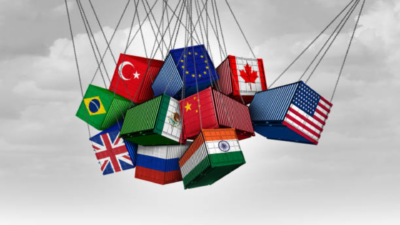Why gold is finding a new home in institutional portfolios
Gold has never been a big part of institutional portfolios, but that’s beginning to change.
Locally, gold performed well for NGS Super in 2022’s risk-off environment, and it’s since instituted additional gold hedges. Elsewhere, the Future Fund has talked up the role the commodity is playing as a defensive lever in its ongoing investment strategy rethink.
That’s partly due to geopolitical uncertainty – often the first reason offered by its advocates for why gold belongs in portfolios – but renewed institutional interest also comes down to fundamentals.
“From an institutional perspective, people are starting to take notice of the price; they’re looking at this for the very first time,” World Gold Council (WGC) CEO David Tait tells ISN. “There’s a whole generation of investment managers… who have been largely apathetic or ignorant of gold because of the variety of alternative investments they’ve been able to trade. But because the price has continually moved and surprised them it, it now behooves them to get involved.”
The geopolitical situation has “obviously” produced a response in gold (while Bitcoin, the “so-called savior” did the opposite of what was expected and fell with other risk assets through 2022) and proved that the commodity was a valuable diversifier. But it’s still a hard sell.
“Most compliance and risk officers are very focussed on that and their bonuses are paid when things don’t go wrong. So when you get your risk allocation at the beginning of the year, if they can steer you towards transparent, liquid products that’s what they’re going to do. You need to make a very compelling case to go galloping off to vague alternative investments and come out with your shirt. It’s an unnecessary gambit in many respects.”
WGC’s own statistics show that 50 per cent of investors at the institutional level don’t trust gold, while 60 per cent don’t understand it.
“Gold is difficult to trade, and difficult to understand; it’s expensive, it’s clunky, it’s bilateral in many respects, and it doesn’t fill you with confidence – especially when you compare it to the other end of the spectrum, and mandatory clear USD swaps or currencies or credit or equities, which are easily surveyed and where there’s no sense of impropriety, with very, very clear price discovery and great trade reporting; you can’t ring two people and get two different prices.”
To ease that dynamic, Tait and the WGC are working on a number of initiatives (grouped under a plan it calls “Gold 247”) aimed at increasing integrity, accessibility and fungibility – or, as Tait says, making the market “work a hell of a lot better” and hopefully justifying the five per cent portfolio weighting Tait thinks is a “no brainer”.
In practice that means introducing a blockchain database for tracking gold through the supply chain so that investors can check “that it is what it says it is and it’s come from where it should have come from”, as well as tokenisation of gold to “defragment the market”.
“In this digitalized version you’ll have atomic settlement, perfect surveillance and be able to see the leverage, and the actual gold there. It’s everything a regulator and a compliance officer will love. And I think that’s a future that legitimately supports the price as well.”
“My goal with this is that the asset managers of the world will for the very first time be able to trade gold that is capital light and the number of reasons we all distanced ourselves from it will start to decline; it will start to be easy to trade relative to other assets.”











